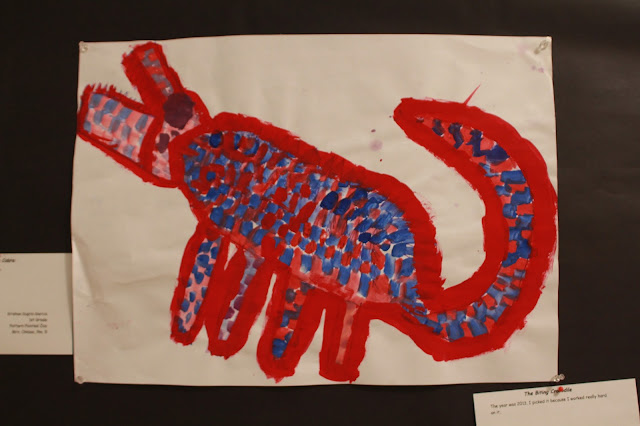Brushstrokes...
Visual Arts Notes from Mr. Miceli
Pattern Painted Zoo
First Grade
Medium: Tempera Paint, Oil Pastel
Skills and Technique: Color theory, Color mixing, Pattern
Continuing with the nature theme of the first grade class, these paintings represent students attempting to make their reptiles, mammals and amphibians larger than life. Each student chose a specific organism to recreate, then began to move their whole arm around the paper to make large bodies, heads arms, legs, tails, etc. focusing on creating the correct proportions of a large drawing. I wanted the students to also explore the possibility of coloring their animals completely different than what they look like if you were to see them in a zoo or in the wild. Our first graders have created a pattern painted zoo of their own, using specific patterns of color with their paint brush, there are signs of a lack of imagination!
California Standards for Art
2.4 Plan and use variations in line, shape/form, color, and texture to communicate ideas or feelings in works of art.
2.5 Create a representational sculpture based on people, animals, or buildings.
2.8 Create artwork based on observations of actual objects and everyday scenes.
2.2 Mix secondary colors from primary colors and describe the process.
















